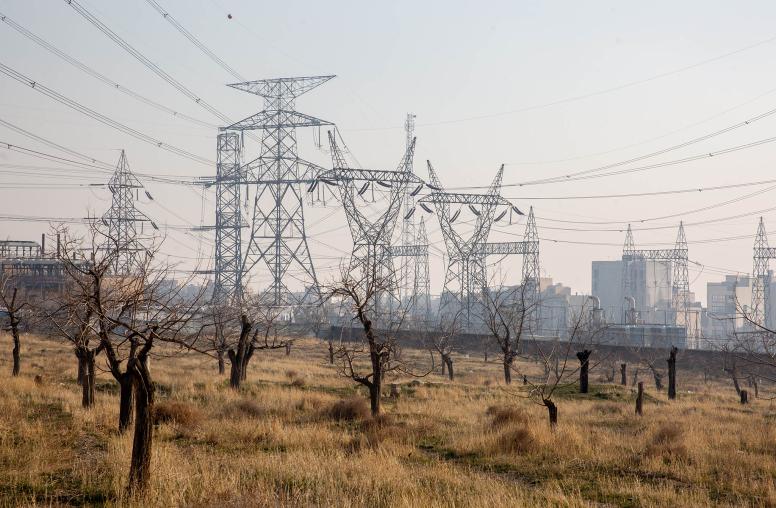How Climate Change Catalyzes More Migration in Central America
Looming climate challenges are exacerbating the region’s struggles with poverty and insecurity, leaving many with no choice but to migrate.
Annual migrant apprehensions at the U.S. southwestern border have surpassed 2 million, breaking previous fiscal year records. The flows (which include large numbers of repeat crossers) have grown increasingly multinational in recent years, including Haitians trying to escape their country’s violence and poverty, along with Cubans, Nicaraguans and Venezuelans fleeing a combination of economic misery and political repression. Mexicans seeking better paid work in the United States also continue to cross the border in large numbers, as they have for generations.

The northern tier of Central America — Guatemala, Honduras and El Salvador — is the other major source of migrants seeking opportunity and safety within the United States. Like Mexicans, they have long sought employment in the United States, though over the past decade increasing numbers are traveling as families, not just working-age single men. The looming catastrophe of climate change is now exacerbating the region’s chronic struggles with poverty and insecurity.
USIP’s Mary Speck spoke with Sarah Bermeo, a professor of public policy and political science at Duke University, about how natural disasters are interacting with and intensifying the other root causes of Central American migration.
Speck: How does climate change increase the pressure to emigrate from Central America? And which communities are suffering the greatest impact?
Bermeo: Climate change affects migration from Central America in two major ways: the increased intensity of storms and changes in precipitation patterns that have negatively affected crop production. Two category 4 hurricanes, Eta and Iota — among the strongest storms ever to hit the region — made landfall in November 2020, a year when the International Red Cross estimates that disasters displaced at least 1.5 million Central Americans. Many homes and crops were destroyed and there was a sharp increase in food insecurity. Almost two years later, many families have not been able to return to normal. Climate change is leading to warming oceans, which means that high intensity storms are likely to become more frequent.
Farmers in Central America have experienced multiple droughts since 2014, resulting in crop losses of 70 percent or more during some harvests and often affecting consecutive growing seasons. There have also been occasional periods of intense rainfall that inflict strong damage on crops. When crops fail, subsistence farmers cannot grow the food they need to feed their families and those who farm for wages lose their livelihoods. Changes in precipitation patterns, including prolonged dry spells and periods of intense rainfall, will continue as the impacts of climate change intensify.
Both storms and crop failures have driven already poor families further into poverty. Droughts were likely a key driver of large increases in family migration from Honduras and Guatemala to the United States in 2018 and 2019. Many of those arriving in the United States during this time came from rural areas, including the highlands of Guatemala where Indigenous communities make up a large portion of the population. They left their farms because they could no longer feed their families if they remained.
Speck: You have written that the “negative impacts from climate and violence reinforce each other, increasing external migration.” Can you explain the relationship between rural food insecurity, urban violence and external migration?
Bermeo: Globally, most climate-related migration happens within countries: people who can no longer meet their needs at home migrate to a new home in their own country. In northern Central America, that is not what we are seeing. People displaced due to climate change, often facing severe food insecurity, are relocating south to Costa Rica or north to Mexico, Canada and the United States.
This appears to result from the lack of viable internal migration options. Gangs control many urban neighborhoods, making it difficult for people to move there. Rates of homicides, gang recruitment, and extortion are high in urban areas, and criminals usually operate with impunity. When farmers are displaced by storms or can no longer produce enough to meet their basic needs, they need to find new places to live. If they can’t find suitable places internally, they will migrate abroad. Climate change forces people to leave their homes and then high levels of violence force them to leave their country. These migrants then mix with other migrants — those fleeing violence or looking for better economic opportunity — to create flows of migrants leaving for a variety of reasons that are not easily disentangled.
Speck: Some studies show that households with more resources are more likely to leave, given the high cost of emigration. According to a survey released by scholars from MIT in 2021, Central Americans spend $2.2 billion per year attempting to migrate and hiring a smuggler to enter the United States costs about $7,500 — that’s more than double the average per capita income in northern Central America. Is there a danger that foreign assistance will increase incomes and therefore spur even more emigration?
Bermeo: To understand the link between income and migration in any given situation, it is important to look at the underlying drivers of migration. When households or individuals are saving up to migrate, it is likely that increasing their income (including through foreign aid) could help them reach this outcome more quickly.
Those who migrate due to climate-related impacts are not in this situation. They are migrating because their income and assets are declining. In some cases, families affected by climate change may decide to sell their few assets to finance migration rather than selling them to buy farming inputs or to meet their immediate needs. They are at a tipping point: migrate today or perhaps lose the financial ability to afford migration at all. In many of these cases people would prefer to stay, but they have lost the ability to do so.
Foreign assistance can decrease migration if it improves Central Americans’ expectations that they can sustain their livelihoods without leaving home. At any given point in time, there are people who could afford to migrate but have chosen not to. Climate-related shocks can cause them to rethink this decision and leave. The sheer magnitude of migration suggests that foreign aid is unlikely to make it worse: More than seven percent of the entire population of some departments in Honduras and Guatemala has shown up at the U.S. border traveling in family units in recent years. Total emigration numbers are even higher, as some don’t arrive in the United States. These families are traveling with children through extremely harsh and dangerous conditions. Many would choose to avoid this journey if they had hope for sustainable outcomes at home.
Speck: Central America suffers not only from poverty and violence but also fragile governance. Surveys show that support for democratic institutions has declined over the past decade while perceptions of corruption run high. Given the weakness of government institutions, how and where should the United States channel assistance to increase the region’s resilience to climate change?
Bermeo: El Salvador, Guatemala and Honduras perform poorly on measures of corruption; in recent years this appears to be trending in the wrong direction, with governments refusing to cooperate with international bodies that had been established to help fight corruption. My strong recommendation would be for aid agencies to consider channeling significantly more of their assistance directly to local groups, bypassing both country governments and internationally based for-profit organizations.
Working directly with local groups accomplishes multiple goals. Local people understand both the needs of their communities and the challenges of implementation. Cutting out for-profit “middle” organizations allows a larger proportion of funding to be used directly for programming.
There’s a further consideration that is seldom discussed by foreign assistance policymakers: working directly with local communities helps build government capacity from the ground up. In countries where corruption is high, governments are likely to look skeptically on foreign aid “governance” programs. When local people come together to make decisions and implement programs, they build community and leaders emerge even without programs that specifically target governance.
Speck: Are there any hopeful trends in the region? Or examples of local adaptations to climate change that show signs of providing the kind of hope for the future that might decrease the pressure to migrate?
Bermeo: There are promising opportunities for climate adaptation in the region, particularly in the realm of agriculture and smallholder farmers. The Water Smart Agriculture project that Catholic Relief Services has piloted in the region is showing impressive early results. Farmers are being supplied with information about soil quality and farming techniques so that they can make decisions about their own farms that make them more resilient to climate change. The project encourages farmers to participate in all stages of the program and to train other farmers.
Other promising techniques include early warning systems that allow farmers to adjust their crops or farming techniques to changing weather conditions. We have the data but communicating this broadly and in real time remains a challenge. Building resilience to storms and improving capacity for disaster response are also critical, but more difficult given the need for competent governance to perform these at scale.
Even with adaptations, climate change is likely to render some areas inviable. Displaced people will still need safer in-country destinations and legal pathways for external migration. Destination communities will need resources to handle increased demand for services such as health care and education, and to ease short-term pressures on housing and infrastructure. Research shows that migrants become productive members of their new communities, contributing to the economy and paying taxes that help support government provision of infrastructure and services. Over time these benefits are strong, but in the short-term adjustment costs are real and can be daunting for destinations receiving many migrants in a short period.
The relatively young population of Central America can make strong economic contributions at home and abroad, but they need help to overcome the devastating impacts of climate change. That will require a multi-pronged approach in both the United States and Central America: locally led adaptation, investment in resilient infrastructure, safer Central American cities to receive in-country migrants, and access to legal migration pathways abroad.



